The $5000 Heating Bill I Barely Escaped
Outside, it’s 9 degrees Fahrenheit and inside it’s trending the same. You’re freezing. You’ve lit a few candles to help fight back, pitting goldfish against a great white shark.
Outside, it’s 9 degrees Fahrenheit and inside it’s trending the same. You’re freezing. You’ve lit a few candles to help fight back, pitting goldfish against a great white shark.
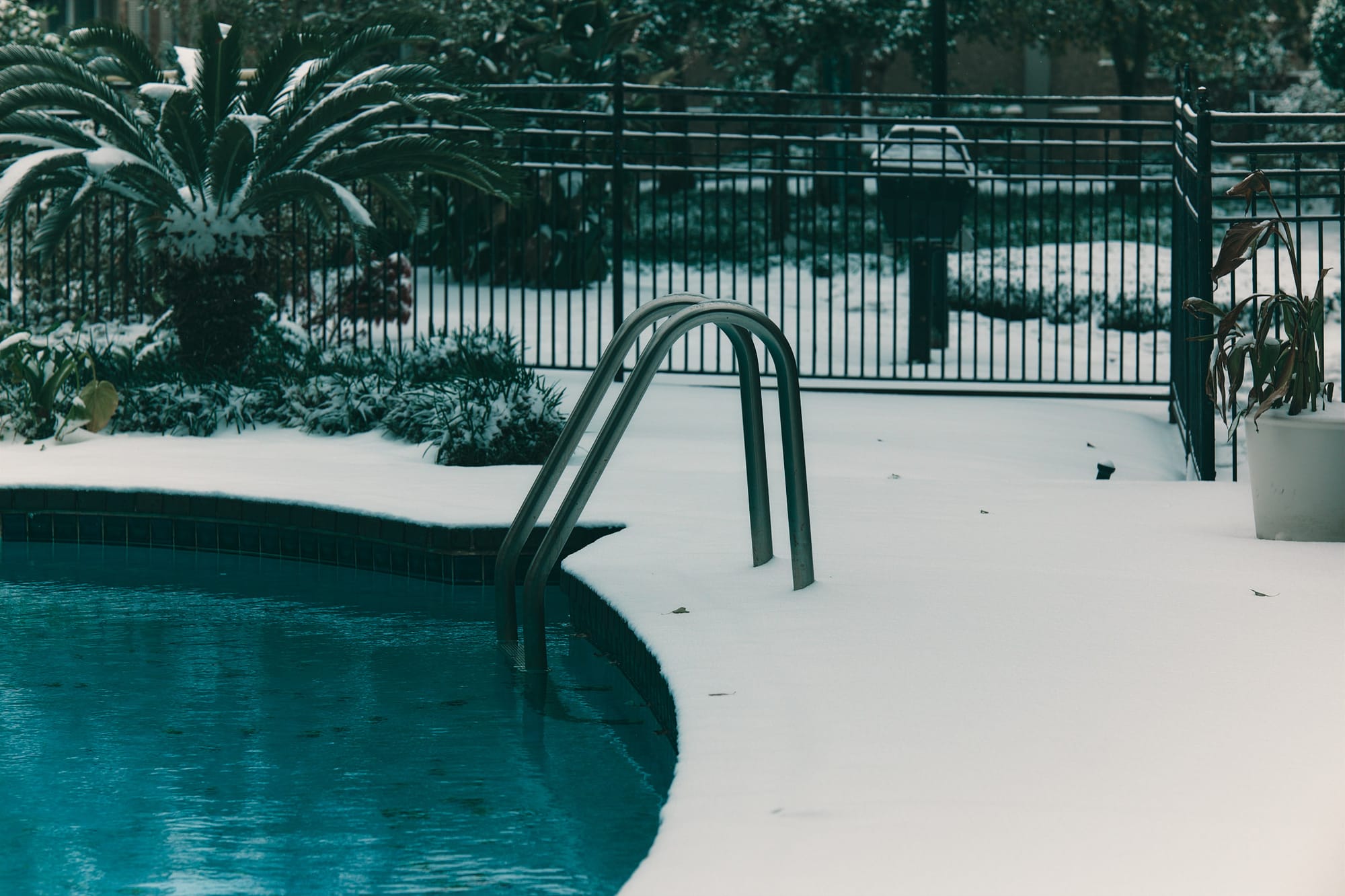
Outside, it’s 9 degrees Fahrenheit and inside it’s trending the same. You’re freezing. You’ve lit a few candles to help fight back, pitting goldfish against a great white shark. There is power, but if you turn on your a/c heater it’ll cost almost $40 per hour to run just to produce a tepid current. What the hell happened and what do you do? What can you do?

My fiancée (now wife), our tiny 4lb adolescent puppy (now 5lb dog), and I were hunkered down with sufficient food, books, games, and energy. We were one of the lucky few that never lost power, on account of living in the middle of downtown Houston. We typically don’t read the news, but we do check the weather, so we knew about the upcoming cold snap. Plus, relatives were calling to make sure we were aware of the impending weather and to stock up, especially on toilet paper (get a bidet, btw).
Despite being prepared, we didn’t know how this was even possible in Texas. How did winter storm Uri come about? Was it just a terrible weather pattern or a symptom of climate change? And why now? I haven’t seen snow in Texas since I was a little kid in the early 2000s, and even then it was just a couple of light dustings.
February 2021 was the 16th warmest February globally since record-keeping began, but the coldest for North America since 1994[1]. The world is warming as we pump more energy into our atmosphere and terraform our home. It could be worse. Among the myriad pollutants we generate, some aerosols actually raise our planet’s albedo and have a cooling effect that negates roughly 12-30% of warming[2].
Despite the warm winter, a snap freeze blanketed most of NA. A low pressure center was detected in northern Alaska, moving through Canada, the northern CONUS, and centering over the Rocky Mountains[3]. This low pressure air mass disrupted the northern jet stream, "pulling” it further south than it normally goes.
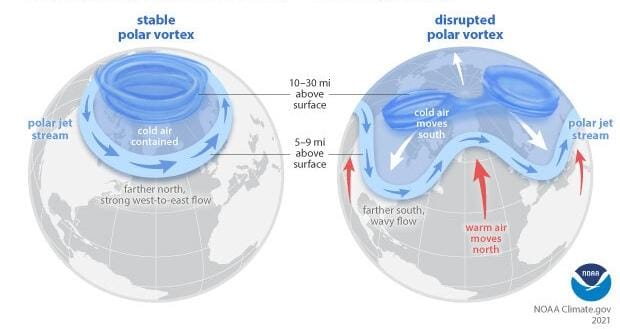
This is the jet stream anomaly that enabled Uri.
Houston’s winter storm history shows more than I remember[4]. However, the past two storms are definitely among the strongest ever and for sure the strongest in my lifetime.
Climate science is exceedingly complex - scientists deal with data oceans, not data lakes. Despite progress in understanding Earth’s climate patterns, we can’t attribute any event as, say, x% due to climate change and y% to weather patterns. It’s easy to say, at least, that it was due to bad luck, right?
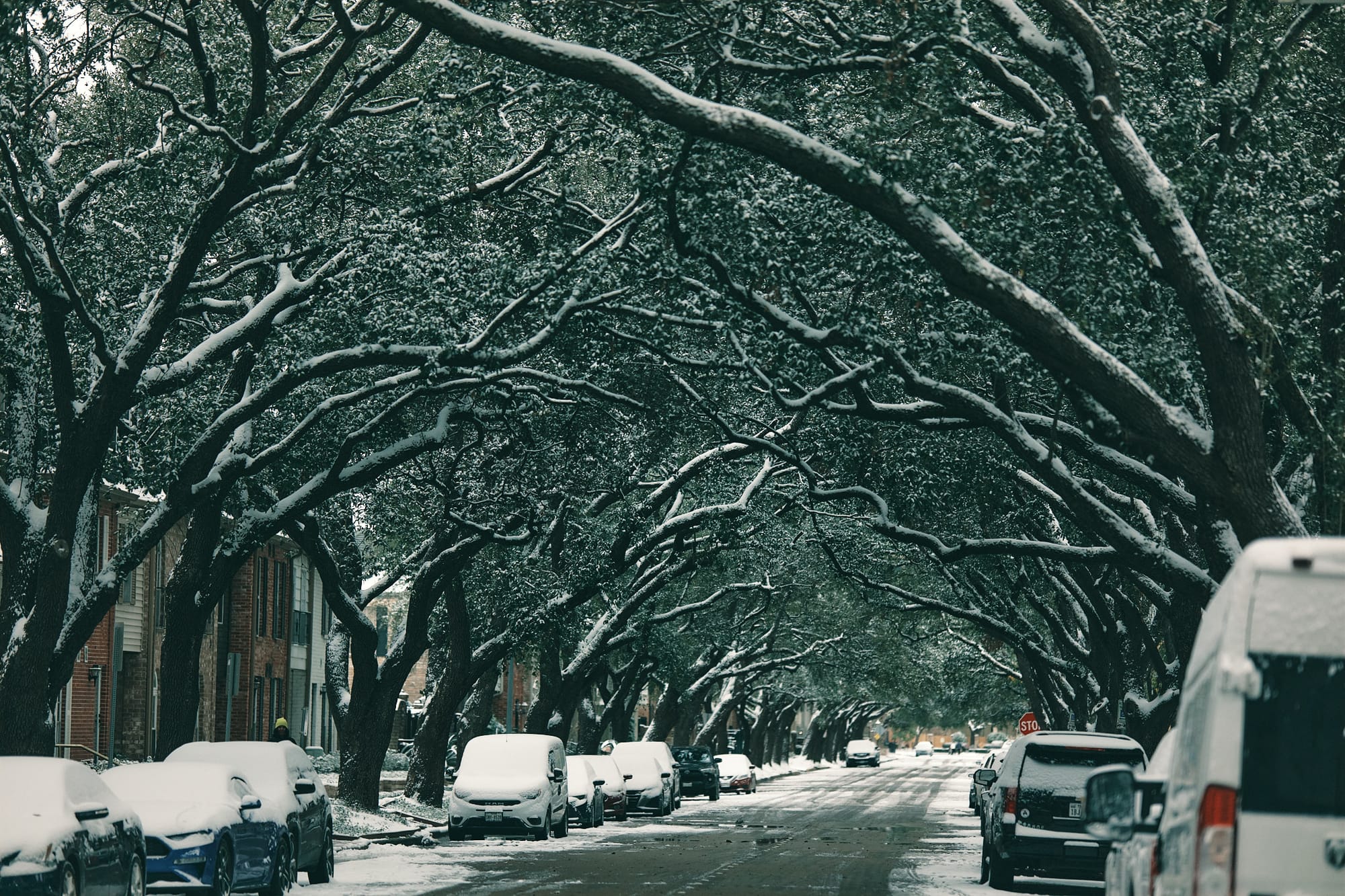
What was it like getting to tangle with Uri? Like I mentioned earlier, we were one of the lucky ones that never lost power - not even for a minute. We lived nestled between Texas’ largest skyscrapers and within walking distance to Houston’s city hall. Proximity to government, big business, and major healthcare facilities is likely what raised the area’s priority enough to prevent any major blackouts.
What should’ve been an extremely fortunate situation nearly became a financial headache. As the winter storm hit, we kept our a/c unit running to keep warm, with a small Dyson fan to supplement it due to the large temperature differential (our a/c unit could typically only handle a ~30 degree difference with the outside). However, when I checked the Griddy app on my phone, I immediately shut off all our appliances.
Texas’ power grid is mostly independent from the U.S. electric grid and is managed by a nonprofit called the Electric Reliability Council of Texas (ERCOT). It has some interconnects with other systems and Mexico, but not enough to import sufficient energy to counteract a winter storm like Uri[5]. This setup reduces federal oversight and allowed for deregulation. Texas’ deregulated electricity market means its citizens have the “power to choose” their electricity provider.
We chose Griddy, a unique subscription-based energy provider that, for $10 a month, would pass the wholesale spot price of electricity directly to the consumer. Usually, we’d pay a normal electricity cost comparable to regular providers, if not slightly cheaper without gimmicks distorting the price. Sometimes we could lower our bill through the usage of excess electricity, as shown below with the negative spot price.
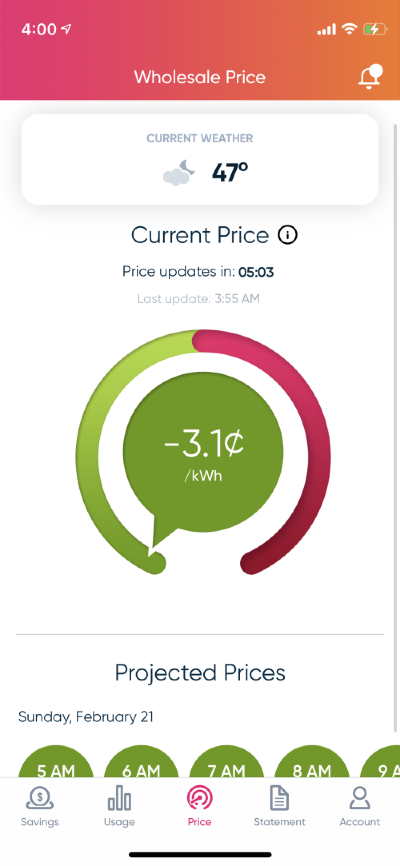
This became a giant issue when the spot price was $9000 per megawatt-hour, or $9 per kilowatt-hour.
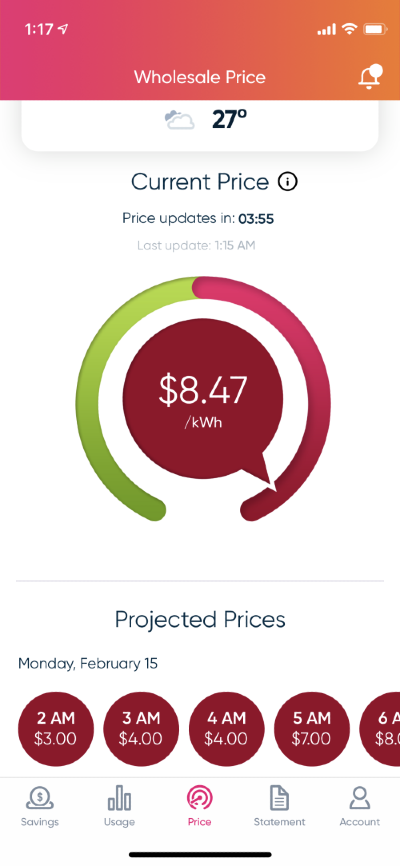
Uri’s frigid presence exploited weaknesses in the Texas electrical grid. Insufficient weatherization improvements left the infrastructure unprotected from severe events. A lot of energy generation and transmission went offline. Most of the wattage that went offline was from non-renewable sources, at a nearly 1.6:1 ratio to renewable sources[6] (28000MW vs. 18000MW).
To prevent a total collapse, encourage more electricity generation, and divert resources to priority areas, the Texas Public Utility Commission (PUC) set the spot price to the maximum legal limit - $9,000 per megawatt-hour. Most individuals were insulated from this change as these prices (and subsequent losses) were borne by the middlemen providing energy at contractually agreed prices. I was not one of those individuals.
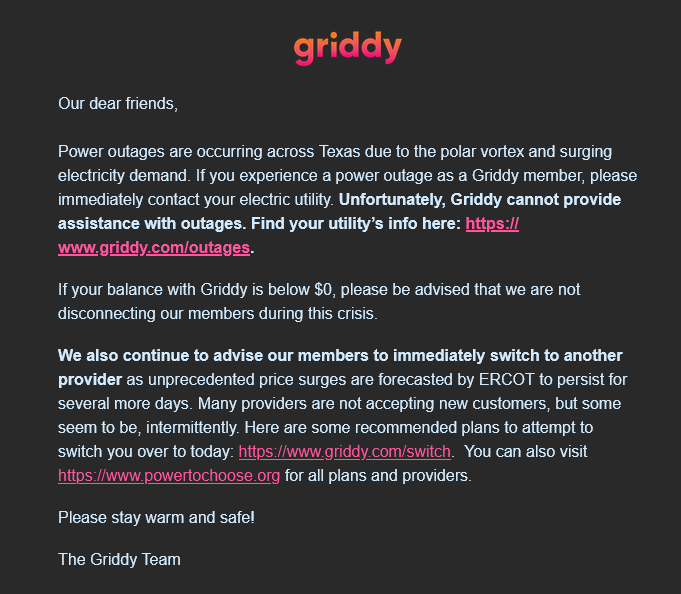
We had already minimized our electricity consumption when we received the notification. We were covered in multiple layers of blankets, huddled for warmth. Still, we were very cold. Fortunately, we didn’t have to leave our apartment for work, so we could stay calm and focus on each other. After a couple of days, the indoor temperature was dipping below freezing, which, aside from the obvious displeasure, could cause severe plumbing issues. So we decided to turn on the heaters.
Our unit had a typical central a/c setup with an estimated 1 ton unit producing about 3500 watts of air conditioning power. Running it at full tilt constantly for the duration of the storm would have consumed about 590kWh (3.5kWh * 168). The $9,000/MWh rate was technically only set for 32 hours[7], however, the price was hovering in that regime for most of the storm. Averaging the price at $8.5/kWh gives an estimated cost of $5015 to stay lukecold. But staying lukecold was better than freezing, so we researched our options.
We read about Providers Of Last Resort (POLR) that must take any customers from failed energy companies. They’re typically the biggest and most stable companies in the state that can absorb vast amounts of new, sudden customers. They have terrible rates compared to the competition, but those were still orders of magnitude better than what Griddy was offering. Griddy was still operational throughout the storm though, so we couldn’t be sloughed off into a POLR.
After searching and with insane luck, we squeezed into the final new customer window for Discount Power. Miraculously, they supported a same-day transition. There were indeed some who didn't switch in time and had to pay the full spot price. For example, Lisa Khoury from Chambers County dealt with a $9300 bill and filed a class action lawsuit in response. We slid under the closing gate before the horde of zombies reached us.
Despite the drama, I got off easy from this storm. Even if I had to pay the spot price to stay warm, I would’ve been fine. There were far too many that had to pay the ultimate price due to the failures of our communities and our state.
You can’t get something for nothing. In exchange for deregulation and “lower” energy prices, we lost resilience and connection. Divided, we are weaker. The true cost of this exchange was paid by those we lost forever.
Official estimates put the death toll at 246; unofficial estimates at 700[8][9]. The ages of the deceased span the spectrum from under 1 to 102 years.
Recriminations began immediately. No one in charge wanted or felt they should take the blame. Should Governor Abbott have resigned for not properly protecting the most vulnerable? Or should the ERCOT leaders, some of whom didn’t even live in the United States[10], have shouldered the fallout? Our state was already aware of the insulation problems in our energy supply due to an ice storm that happened a decade prior in 2011[11]. Complacency at all levels, and the avaricious desire to never impede profits meant we never got around to winterizing our equipment.
Some change has come, albeit late. The ERCOT management structure has been reformed with the following changes:
A new 25-member regulatory body called the Texas Energy Reliability Council (TERC) was established. According to Senate Bill 3 from the 87th legislative session, its purpose is “to (1) ensure that the energy and electric industries in [Texas] meet high priority human needs and address critical infrastructure concerns and (2) enhance coordination and communication in the energy and electric industries in this state“[12].
Winterization is finally legally codified, also part of SB 3. It seems to be a pretty straightforward bill with real intent and enforcement. Reading through it (here), there’s no squirrely language that mentions that winterization needs to be done via a “best effort” and there are actual fines ($1,000,000 per day) for violations stemming from a lack of weather preparedness. This bill also created a power outage alert system to warn the public and related state agencies.
It’s not all positive and optimistic - far from it. SB 3’s final form removed a forward-facing grant program that would’ve assisted water and healthcare infrastructure resiliency[13]. Also, there’s the question of who specifically should have been held accountable. The 5 ERCOT board members who lived outside the state resigned and the CEO of ERCOT (whose salary was $803,000 per year), Bill Magness, was fired. Bill’s permanent replacement, Pablo Vegas, now earns more than $2,000,000 a year.
In terms of public officials (remember, ERCOT is not a public entity, it’s a nonprofit), there were three major resignations. First, the chairwoman of PUC, DeAnn Walker, then PUC commissioner Shelby Botkin[14]. Walker was replaced by Arthur D’Andrea who only lasted two weeks. Why? He was secretly recorded pledging to protect investor’s profits amid the chaos[15].
Were resignations really enough? Are they truly a form of accountability? Hundreds of people died as a result of the actions and inaction of this web of people. One of the main problems with exacting justice in these kinds of cases is that responsibility is diffuse, by design.
Perhaps the cognitive dissonance from the paradox of preparedness necessarily means we must be reactive sometimes instead of proactive. It’s incredibly frustrating to see the effects of this mindset occur in real time. But at least we did something in this case, after much haranguing. The efforts from these bills likely saved some lives and heartache from the next storm and will hopefully continue to protect us against future horrors.
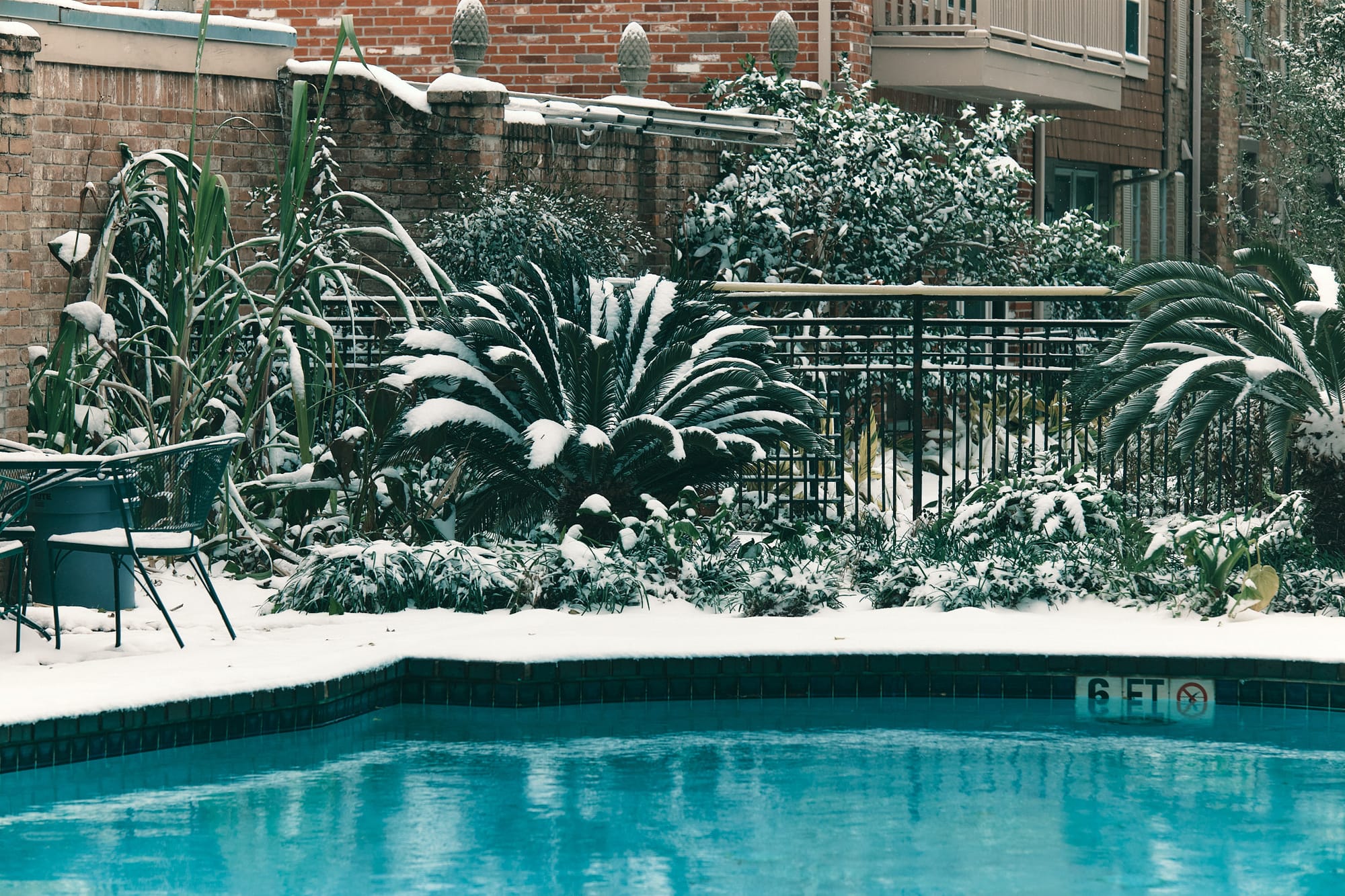
Enzo was the first blizzard on record for the Gulf Coast[16]. Despite the aberrant accumulation of snow, daily temperatures fluctuated quite a bit and the afternoon temperatures weren’t unreasonable. This was a different beast than Uri, but it was still deadly. This time, most deaths were due to vehicular accidents rather than vast electrical grid failures. While still tragic, the casualties from Enzo were 1-2 magnitudes lower than those of Uri and are more part of the discussion about our over-dependence on car transit.
The grid wasn’t tested as strongly as during Uri, but it was tested nonetheless. The ruggedization efforts likely prevented a lot of unnecessary mayhem.
It’s comparatively easy to make obvious decisions when one has hindsight as their tailwind. We knew about these problems in advance and still, we waited until after we needed the changes to make the necessary decisions. True leaders, the ones who possess an entelechy that drives them to realize the full potential of themselves and those under their stewardship, are the ones that look forward and make decisions to protect us from the problems we don’t even yet know exist.

Your link has expired. Please request a new one.
Your link has expired. Please request a new one.
Your link has expired. Please request a new one.
Great! You've successfully signed up.
Great! You've successfully signed up.
Welcome back! You've successfully signed in.
Success! You now have access to additional content.